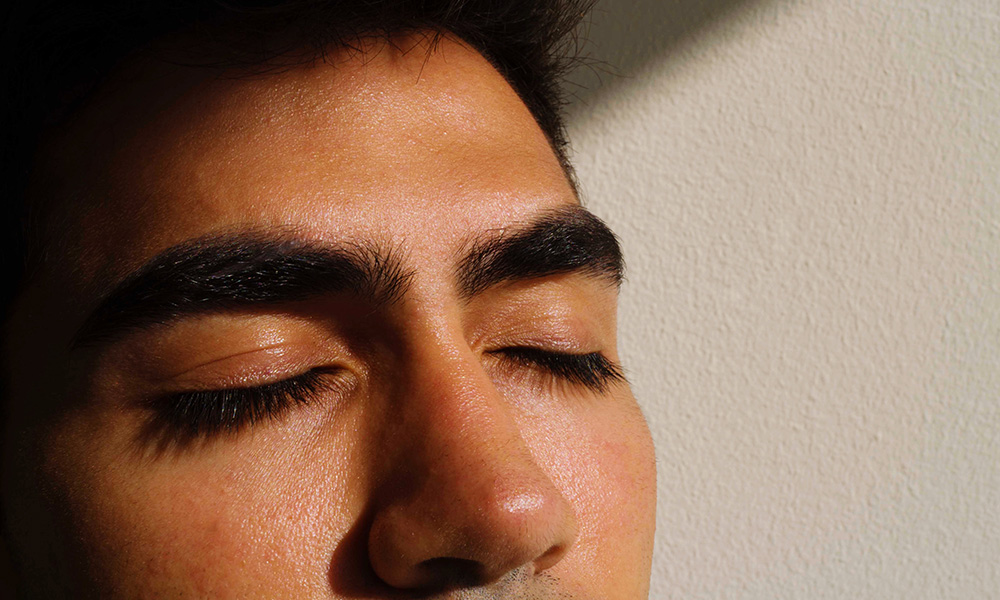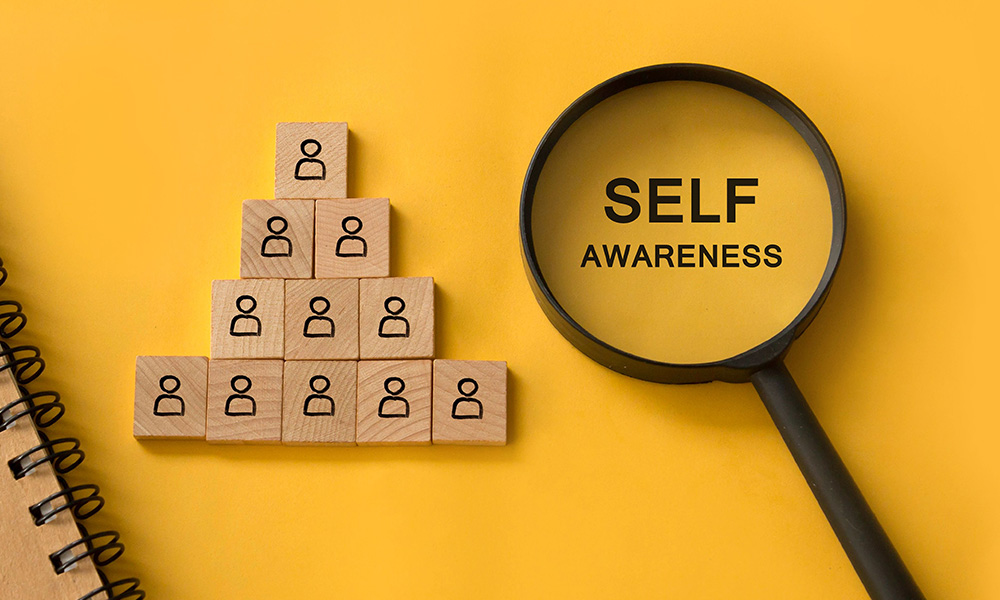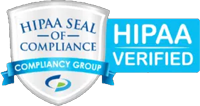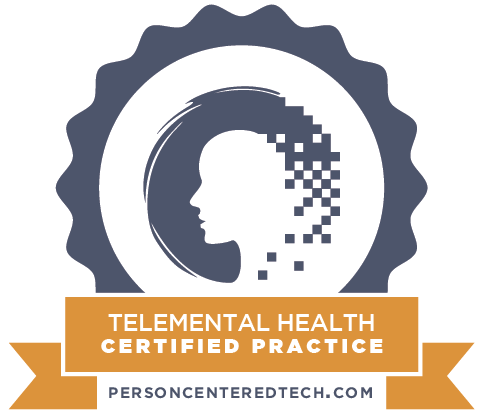Sexual Health Update: Advances in the Prevention & Treatment of Sexually Transmitted Infections
The surge in sexually transmitted infections (STIs) continues in the US with 2.5 million cases reported to the Centers for Disease Control (CDC) in 2021. Cases of syphilis in women jumped 49% compared to the prior year; congenital syphilis (when syphilis passes from mother to baby during pregnancy) was up 24% when compared to 2020. Rates of gonorrhea have increased 118% since their historic low in 2009. The CDC as estimated that one in five Americans (20%) have a STI in any given year. Young adults ages 20-34 have the highest rates of infection. The World Health Organization reports that the rates of non-classical STIs (such as Shigella, Hepatitis A, Zika, and lymphogranuloma venereum (LGV)) are also on the rise.
Because STIs often do not show symptoms despite their long-term health consequences, prevention and screening are essential to contain the spread of the diseases. With directed, government-supported efforts around the world, important advances in prevention and treatment are becoming available. I summarize a few of the most exciting recent advances in the world of STIs in the sections below.
doxyPEP
In what amounts to a major advance in prevention of STIs, the CDC released proposed guidelines in October 2023 for the use of the antibiotic DOXYCYCLINE as post-exposure prophylaxis to prevent infection following possible exposure to gonorrhea, chlamydia, and syphilis. This approach, known as doxyPEP, may help to counter the recent surge in these infections in the US and prompt uptake by other countries around the world.
The proposed guidelines recommend that a single 200 mg dose of oral doxycycline taken within 72 hours after oral, anal, or vaginal sex should be considered for gay, bisexual, and other men who have sex with men (MSM) and for transgender women who have had gonorrhea, chlamydia, or syphilis at least once in the past year. This is a strong recommendation supported by data from clinical trials.
The guidelines also say that doxyPEP “could be considered” for MSM and transgender women who have not had a recent STI if they “will be participating in sexual activities that are known to increase the likelihood of exposure to STIs, e.g., during weekend events, cruises and festivals.”
However, citing the lack of evidence, the guidelines do not recommend the use of doxyPEP for cisgender women, cisgender heterosexual men, transgender men, or other queer or nonbinary people. The CDC does leave the door open to clinicians to offer doxyPEP to these populations on a case-by-case basis following risk assessment.
DoxyPEP should be used in the context of a comprehensive sexual health approach that includes risk reduction counseling, STI screening and treatment, vaccination, and access to HIV pre-exposure prophylaxis (PrEP), HIV care and other services.
HIV Prevention
An estimated 38 million people are living with HIV worldwide, with up to 1.5 million new cases of HIV reported each year. Due to advances in prevention, the rate of HIV infection worldwide has dropped by 54% since the peak of the epidemic in 1996.
Pre-exposure prophylaxis (PrEP) for HIV prevention first became available in the US in 2012 and radically changed the risk of getting HIV for sexually active adults and adolescents. Daily oral dosing of a potent anti-viral combination has been shown to reduce the risk of HIV transmission by 99%. Maximum protection for receptive anal sex (bottoming) occurs after about 7 days of use. For receptive vaginal sex and injection drug use, PrEP pills reach maximum protection in about 21 days. PrEP is recommended for gay, bisexual, and other MSM, transgender women, and men and women who inject drugs.
“On-demand” oral PrEP, also known as the 2:1:1 method, has been shown to be safe and effective, reducing HIV transmission by 86% for men who have anal sex without a condom. The 2:1:1 method involves taking 2 pills 2-24 hours before possible sexual exposure (closer to 24 hours is preferred), followed by one pill daily for the next two days. The 2:1:1 method is recommended for MSM but not for heterosexual men and women, IV drug users, or transgender persons.
You can find a clinician who prescribes PrEP through the national PrEP Clinician Locator (https://preplocator.org/). Free PrEP and STI testing for men who have sex with men can be obtained through MISTR (www.heymistr.com).
Post-Exposure Prophylaxis (PEP) for HIV is also available in the US and is effective prevention for people who have risky sex infrequently. PEP is the use of antiretroviral drugs for 28 days after a single high-risk sexual episode to prevent the person from getting HIV. For persons with ongoing risky sexual activity, the CDC recommends beginning PrEP immediately upon completion of the 28-day PEP treatment.
STI Vaccines
Safe and effective vaccines are available for two STIs: Hepatitis B (a serious disease that may cause lifelong infection, cirrhosis, liver failure, and liver cancer) and HPV (which is known to cause cervical and anal cancer). One of the major routes of transmission for Hepatitis B among heterosexual, bisexual, and homosexual men and women is through sexual contact. Hepatitis B vaccine is recommended by CDC for infants, children, adolescents, and adults. Unfortunately, up to 70% of adults in the US report that they are unvaccinated.
The HPV vaccine is recommended by CDC for routine vaccination of children, adolescents, and young adults through age 26, as well as for adults at high risk of infection. The HPV vaccine has been incorporated into routine vaccination programs in 111 countries around the world. The incidence of infection with cancer-causing HPV in young adult women have dropped 81% since the vaccine was introduced in 2006.
Research into vaccines against genital herpes is advanced and ongoing. Chlamydia vaccines are in early clinical trials. This fall, FDA granted Glaxo-Smith-Kline fast track designation for its investigational vaccine against gonorrhea, now in Phase 2 trials; fast track designation allows for accelerated development and expedited review of this vaccine.
Work on new HIV vaccines continue, leveraging the remarkable success of mRNA vaccines for COVID as well as other novel approaches. Multiple promising investigative vaccines have failed to be effective in clinical trials. The HIV virus’s ability to mutate and diversify itself remains the greatest challenge to developing an effective vaccine. And the research continues.
Summary
It serves all of us to stay current with the global developments in STI prevention and treatment as people of all ages and sexual orientations are increasingly at risk for these potentially serious infections. In all likelihood, you know someone whose sexual behavior puts them at risk. Please share this article widely.
Glossary
- Bisexual: A person who is attracted to both people of their own gender and other genders.
- CDC: the US Centers for Disease Control and Prevention
- Cisgender person: Individuals whose current gender identity is the same as the sex they were assigned at birth.
- FDA: the US Food and Drug Administration
- Gay: A person who is attracted primarily to members of the same gender. Gay is most frequently used to describe men who are attracted primarily to other men, although it can be used for men and women.
- Gender: The cultural roles, behaviors, activities, and attributes expected of people based on their sex.
- Heterosexual or Straight: A man who is primarily attracted to women or a woman who is primarily attracted to men.
- HIV: human immunodeficiency virus.
- HPV: human papilloma virus. The virus known to cause cervical and anal cancer as well as other less serious infections.
- Lesbian: A woman who is primarily attracted to other women.
- MSM: men who have sex with other men.
- PEP: post-exposure prophylaxis. Refers to the use of antiviral medication to prevent the acquisition of HIV following known or possible sexual exposure to an individual with HIV.
- PrEP: pre-exposure prophylaxis. Refers to the preventative use of antiviral medication to prevent the acquisition of HIV through risky sexual activities.
- STI: sexually transmitted infection. Also referred to as STD (sexually transmitted disease)
- Transgender person: A person whose gender identity or expression is different from their sex assigned at birth.
- Transgender man: A person assigned female at birth who identifies as male.
- Transgender woman: A person assigned male at birth who identifies as female.
References
Advances in the treatment and prevention of HIV. Hospital Medicine July 2023. https://www.magonlinelibrary.com/doi/full/10.12968/hmed.2022.0502?rfr_dat=cr_pub++0pubmed&url_ver=Z39.88-2003&rfr_id=ori%3Arid%3Acrossref.org
Centers for Disease Control and Prevention. Guidelines for the Use of Doxycycline Post-Exposure Prophylaxis for Bacterial Sexually Transmitted Infection (STI) Prevention; Request for Comment and Informational Presentation. 2 October 2023.
Centers for Disease Control and Prevention. Hepatitis B Fact Sheet. https://www.cdc.gov/vaccines/vpd/hepb/index.html
Centers for Disease Control and Prevention. Preexposure Prophylaxis for the Prevention of HIV Infection in the United States—2021 Update. https://www.cdc.gov/hiv/pdf/risk/prep/cdc-hiv-prep-guidelines-2021.pdf
Centers for Disease Control and Prevention. Sexually Transmitted Infections Treatment Guidelines, 2021. https://www.cdc.gov/std/treatment-guidelines/hbv.htm
Centers for Disease Control and Prevention. Sexually Transmitted Disease Surveillance 2021. https://www.cdc.gov/std/statistics/2021/default.htm
Global roadmap for advancing development of vaccines against sexually transmitted infections: updates and next steps. Vaccine, 34:26. https://www.sciencedirect.com/science/article/pii/S0264410X16301700
World Health Organization. STIs in 2022: emerging and re-emerging outbreaks. WHO STI update.
World Health Organization. Sexually Transmitted Infections Fact Sheet, 2023. https://www.who.int/news-room/fact-sheets/detail/sexually-transmitted-infections-(stis)
Before we kick start learning about the mind-body connection, I want you to connect with your body right here, right now. You could be lounging by the pool, sitting at work, or juggling. Whatever it is, pause and notice your body. Scan your body from your feet, up your legs to your stomach, up to your chest, neck, and tip of your head. Now, take a deep breath in and out. What did you notice? How did it feel to notice your body in that way?
In our busy, nonstop lives, it is so easy to focus on what we are thinking about. When we only notice our thoughts, it can be easy not to notice how we feel. When I say feel, I mean, did your stomach drop when your boss yelled at you? Did your hands start to sweat when you had that tough conversation? These body cues are vital but often go unnoticed. Trauma, stress, anxiety, depression, and many others can lead to symptoms in the body but are often ignored.
The more we pay attention to our bodily cues, the more we understand ourselves. Author Mischke-Reeds stated, ‘When we as humans are out of touch with our bodies, we are out of touch with life.’ Many of us desire to be fully embodied, and many are hearing the word for the first time. Embodiment is when you feel connected and attuned to your basic body awareness. It means feeling our bodies and living fully in our experiences. You actually already practiced a form of embodiment earlier when you did the brief mindfulness practice.
Mindfulness has significantly impacted our society and psychological field these past years. Mindfulness involves turning into the self, observing what is happening within yourself, and becoming your best friend by utilizing the COAL acronym (Curiosity, Openness, Acceptance, Love). An essential aspect of mindfulness is to observe yourself nonjudgmentally to help understand your internal experiences while growing your emotional capacity to feel without becoming overwhelmed. The mindfulness wave has brought us tools to explore, calm the busy mind, and listen to the whisperings of our hearts.
While many therapists incorporate mindfulness practices, you do not need to wait for your therapist to utilize mindfulness skills. You can incorporate them into your daily life by practicing some of the tools listed! All it takes is 5 minutes to connect back with your body and observe it with curiosity, openness, acceptance, and love.
References
- Mischke-Reeds, M. (2018). The somatic psychotherapy toolbox: 125 worksheets and exercises to treat trauma and stress. PESI.
- Rachels, K. (2015). Body, brain, love: A therapist’s workbook for affect regulation and somatic attachment. Karen Rachels, MFT.
Every year, countless individuals across the world turn to suicide, leaving friends, families, and communities in profound grief and confusion. The reasons behind these decisions are multifaceted and deeply personal. They can be rooted in mental health issues, past traumas, overwhelming stressors, or feelings of hopelessness and isolation. Suicide is a subject that requires understanding, compassion, and open dialogue to de-stigmatize and support those who might be struggling. As a suicide crisis counselor, I have sat with hundreds of people through their darkest moments, and this is what I have learned.
- No one is immune from feelings of hopelessness. Depression and thoughts of suicide affect all ages, genders, socioeconomic statuses, religions, and ethnicities.
- The overwhelming majority of those with thoughts of suicide feel isolated, or like a burden to those around them. The feeling of being isolated or disconnected can exacerbate feelings of despair.
- Suicide doesn’t just affect the individual. It has a ripple effect, impacting families, friends, colleagues, and even acquaintances. In fact, many people think about suicide because someone close to them died by suicide.
- Human connection is crucial. Humans are inherently social beings and therefore, connecting with others can benefit our mental health in many ways including by reducing the likelihood of following through with suicide.
Suicide is a topic that many shy away from discussing due to its heavy emotional weight and complexity. However, discussing it is exactly the way to combat it. Here are some warning signs to look for:
- Talking about wanting to die or expressing feelings of hopelessness, isolation, being trapped, or being a burden.
- Isolating oneself from friends, family, and social activities.
- Acting recklessly, visiting, or calling people to say goodbye, or giving away possessions.
- Expressing unbearable pain, whether emotional or physical.
- Discussing a topic like suicide can be very intimidating. Here are some ways to help prevent suicide:
- Talk about it! Contrary to popular belief, talking about suicide will not put suicidal thoughts into someone’s head. In fact, it often helps remove them.
- Regular check-ins with loved ones, especially those you suspect might be struggling, can make a world of difference.
- If someone opens up about their struggles, listen without judgment or interruption. Just being there will help. Refrain from saying things like “Think about your family” or “It’s not that bad.”
- Stay calm. If someone is in immediate danger, don’t leave them alone. Call emergency services or take them to a hospital.
Remember, suicide is rarely about truly wanting to die. It is about wanting to escape an unbearable pain and not seeing any other way out. If you or someone you know is struggling with suicidal thoughts, please seek professional help immediately. You are not alone, and help is available.
Suicide & Crisis Lifeline: 988
How well do you know yourself?
Who are the people you know the best? Your spouse? Your best friend? Your sister?
As you think about your most intimate relationships, do you think about the relationship you have with yourself? Chances are, you don’t. The level of emotional self-awareness necessary to truly know, and love, yourself is among our most difficult journeys.
Yet, it is so easy to have everyone else in our lives “figured out.” We know why they do what they do, we read their minds, and know what buttons (not) to press.
But how well do you have yourself figured out? Do you know why you feel what you feel or do what you do?
Emotional self-awareness is a remarkable and rare skill. Yet it is foundational to healthy relationships and to our own happiness.
According to Oxford Language, self-awareness is defined as the “conscious knowledge of one’s own character, feelings, motives, and desires.” Simply put, those who are highly self-aware can interpret their actions, feelings, and thoughts objectively.
The tricky thing about emotional self-awareness is that most of us are on autopilot and don’t even know it. In response to early life experiences we absorb and lock in our thoughts, beliefs, and behaviors without much consideration. That means developing emotional self-awareness starts with a commitment to doing the tough inner work. And that means meeting the protective parts of us that so masterfully use distractions to keep us out of emotional pain.
Once we slow down enough to reflect and acknowledge the multitude of detours we take in a day to avoid having to look inward, we can begin to recognize the ways we are blocking access to our own emotional self-awareness.
It is only through stillness that clarity is possible.
If you can brave this part, you can build a sound foundation to design your life around what brings you the most meaning and purpose in life. You can look at yourself with honesty and not fear what looks back at you. You can only be capable of truly extending empathy and building deep intimacy with others when you have learned to love what you once feared in yourself.
Change [chāynj]: verb; to make different in some particular way, to make radically different, to give a different position, course, or direction to (Merriam-Webster, 2023)
What is the purpose of making alterations in our lives? Why change what we know, what we do, or how we act when that has been the norm for as long as we can remember? Maybe it was modeled for us. Maybe it has kept us safe.
It is possible we may feel stuck in our ways of living and acting and have aspects of life that can feel or look predictable. Whether we recognize these patterns as healthy or unhealthy, predictability can feel comfortable. When necessary change is recognized within us, it is common that the homeostasis we typically feel is unbalanced or something that we are doing is no longer working well for us. Although change is inevitable, it can feel scary and be uncomfortable for those that have gotten so used to their sense of normalcy.
What most don’t often recognize is that we can learn SO MUCH during periods of change— if we allow ourselves to. Growth is all about leaning into those areas of discomfort and truly being curious about ourselves and our experiences.
As Sigmund Freud once said: “Out of your vulnerabilities will come your strength.” This couldn’t be truer—allowing our vulnerabilities to present the strengths that we have within us and have not yet recognized in ourselves. Seeing our strengths in a new form.
Whether we want to or not, we are always growing and changing. Hopefully we can lean into what that looks like for each of us to be able to begin or continue that personal growth journey we are on.
Definition of Music Therapy:
“Music Therapy is the clinical and evidence-based use of music interventions to accomplish individualized goals within a therapeutic relationship by a credentialed professional who has completed an approved music therapy program. Music therapy interventions can address a wide variety of healthcare and educational goals” (American Music Therapy Association www.musictherapy.org)
Definition of a Music Therapist:
“Music Therapists’ objectives are to determine and utilize music therapy approaches that effectively aid in the restoration, maintenance, and improvement in mental and physical health. Music Therapists believe in the dignity and worth of every person. They promote the use of music in therapy, establish and maintain high standards in public service, and require of themselves the utmost in ethical conduct.” (American Music Therapy Association www.musictherapy.org)
- Must have a bachelor’s degree or higher in music therapy from an AMTA approved college/university
- Must hold the MT-BC credential issues through the Certification Board for Music Therapists and requires continuing education. Some states require licensure
- Evidence-based health profession with a strong research foundation
- Music Therapy degrees require knowledge in psychology, medicine, and music
I became a board certified Music Therapist in 2006 and have maintained my credentials ever since. At PCS, I am supported in combining my doctorate of psychology with my music therapy board certification.
Potential Goals:
- Improve communication
- Stress management
- Promote wellness
- Pain reduction
- Emotional expression and regulation
- Enhance memory
- Improve social interaction and teamwork
- Increase self-confidence, self-esteem, self-worth, and self-compassion
History:
- Has been used in the Unites States since the late 18th century to treat physical and mental ailments – usually musicians who played for the patients
- The concept became increasingly popular with returning WWI and WWII veterans
- 1940’s = began the formal organization and education systems for MT
- 1950’s = primarily worked within the mental health field
- 1960’s = expanded to include sensory impairment; developmental and physical disabilities
- 1970’s = included geriatric, medical conditions, those incarcerated
- 1983 = Certification Board of Music Therapy was founded
- Current = work in all settings, with all people, an abundance of interventions, and for all reasons.
Neurologic Music Therapy (NMT):
- NMT was researched and developed by the Academy of Neurologic Music Therapy in Fort Collins, Colorado. Dr. Michael Thaut, PhD
- 1999 = The first certification program of NMT was held
- “Treatment techniques are based on the scientific knowledge of music perception and production and the effects of nonmusical brain and behavior functions.”
- There are six key areas of focus: Speech & Language, Sensorimotor, Cognition, Memory, Executive Function, and Psychosocial Behavior
- There are 20 different interventions within NMT
Potential interventions:
- Musical improvisation
- Songwriting
- Lyric analysis
- Guided imagery through music
- Music and movement
- Music listening
- Vocal warmups/breathing exercise for breath support
- Identifying emotions in music
- Exploring mental health through music
- Exploring addiction through music
- Internal cadence
- Playing an instrument
Resources to learn more about Music Therapy and impacts:
- American Music Therapy Association: www.musictherapy.org
- An Introduction to Music Therapy: Theory and Practice by William B. Davis
- Every Brain Needs Music: The Neuroscience of Making and listening to Music by Larry S. Sherman and Dennis Plies
- How Music Heals Us by Kim Cannan
- Music Heard so Deeply by Betsey King
- Musicophilia: Tales of music and the Brain by Oliver Sacks
- Music Therapy: A Look into the World of Healing Sound by Angelo Molino This is Your Brain on Music by Daniel J. Levitin
It’s been a long, hot summer here in the greater Phoenix area as well as so many other places in our world. I miss my morning walks, which I needed to pause when the low temperatures rose into the upper 80’s to low 90’s. Recently, I got to travel out of town to a cooler area for a few days, and I was so grateful to get to move comfortably around the outdoors again, and to focus on things not only outdoors, but outside myself.
Early in the pandemic, I learned about “awe walks.” Maybe you have heard of them as well? An awe walk is a simple, convenient, no-cost yet powerful way to care for yourself not only physically, but mentally. It’s a walk where you mindfully shift your focus to what is going on outside of you and all around you. On an awe walk you can invite yourself to listen, see, smell, feel (and sometimes even taste) the world around you. In my neighborhood, I like to walk along the canal and see what kind of birds are there. Is this the season for new ducklings? Is that a turtle I see resting on that rock? Oooh, what’s that smell? My neighbor must be grilling dinner. Aaah, I love the feel of the breeze on my skin. I like the sound my steps make on the gravel, and the plop I hear from the fish when they briefly jump out of the water. I always hear those fish way more than I get to actually see them.
Awe walks allow us to escape from our houses and take some time away from the mail, the chores, and the other routines that await us. They allow us to stretch our legs and get our blood flowing. They also allow us time to escape our inner world of worrying and planning—the exhausting way we can focus so much on the past and the future. An awe walk invites us to be in the present, even if it’s just a 15 minute stroll around the block. A research study from a few years ago showed that awe walks increased feelings such as compassion and gratitude. This makes sense because getting outside of ourselves more makes us more able to connect with others and appreciate the world around us.
There are many ways to exercise mindfulness, and to quiet my busy mind. I have tried other healthy practices during this sweltering summer, but I can’t wait for the temperatures to drop a few more degrees so that I can get back to my morning awe walks — even if I have to get up a little earlier to fit them in. Are you with me? In the meantime, stay cool and be well!
Burnout seems to be a hot topic in recent years, but what really is it and how can we hopefully improve our individual experiences?
According to the ICD-11 burnout is defined as “a syndrome conceptualized as resulting from chronic workplace stress that has not been successfully managed” (World Health Organization, 2019). The ICD-11 also characterizes it with the following three dimensions:
- Feelings of energy depletion or exhaustion;
- Increased mental distance from one’s job, or feelings of negativism or cynicism related to one’s job; and
- A sense of ineffectiveness and lack of accomplishment.
Stress, sometimes confused with burnout, is also due to external factors in our lives. The biggest difference, though, is that normal day to day life stress generally has an ending point, whereas burnout is born out of chronic stress that does not cease. We all experience stress at some point and some stress can even be healthy in that it may motivate us. Burnout on the other hand is not something we all experience and it is often seen in helping professions (though not limited to this). The ICD-11, though, does specify that burnout only refers to “phenomena in the occupational context” and not any other context.
If this is resonating with you, it might be time to look at what might be helpful for you in regard to self-care. Some might argue that talking about self-care in regard to burnout places the blame on the individual experiencing burnout, rather than the larger systemic work-place, which I agree with in many ways, but I always come back to the question: What is in my control right now? This is not to say that the larger systemic issues do not matter, but, while we all hopefully advocate for systemic changes, how can you help yourself today? Personally (and though I know it is not a “fix”), self-care behaviors that help me the most are taking time off and reaching out for support from colleagues. It took me over two years of working at PCS to take one entire week off, which was likely a part of what led to the burnout I am experiencing now. Learning how to rest during my time off has been (and still is) a challenge for me as well. When I would take time off, I would fill all the time with activities, friends or family. As my burnout has increased over time, I am seeing now how valuable true rest is to my mental health and my work as a whole.
My biggest hope is that we can all come together to support each other when burnout begins. I know for me, before I started talking about it, I was feeling isolated and would beat myself up thinking that it was just me. I know now that it is not just me and reaching out continues helps immensely.
References
World Health Organization (2019). International Statistical Classification of Diseases and Related Health Problems (11th ed.). https://icd.who.int/
A sex surrogate partner is a trained and certified professional that helps a client explore and overcome physical, emotional, and/or social issues around intimacy and sex.
The role of a sex surrogate is to help individuals with issues such as sexual dysfunctions, shame, negative body image, dysmorphia, anxieties about touch, sex, intimacy, disability, head, brain, spine injuries or other medical issues, autistic features, confusion about sexual orientation, lack of self-confidence, experience, pelvic and/or genital pain, or any physical, emotional, sexual trauma, as well as other triggers. A surrogate partner is utilized in conjunction with a sex therapist and always remains in communication with both the client and their sex therapist.
Sex surrogate partners provide a safe and structured environment and might help with relaxation, eye contact, sex education, body image, communication, sharing painful memories/vulnerabilities/insecurities, relating to another person, body mapping, nudity, giving and receiving touch, genital-to-genital contact, etc. Having said that, sex surrogacy does not always involve sex or any sexual interactions and is not necessarily genital focused. As mentioned before, it is about developing skills and enhancing healing according to the client’s boundaries and needs. When the therapy goals have been met, sex surrogacy therapy ends.
Unlike a sex surrogate partner, a prostitute’s goal is providing sexual stimulation, and satisfaction and one can revisit a sex worker, as they like. In addition, while paying for sex is illegal in most states, law does not prohibit sex surrogacy therapy.
Sex surrogacy therapy is not recommended to people that are engaged in a relationship. Instead, sex therapy (which is talk therapy with assigned exercises to do at home) is more beneficial for the individual and/or the couple.
***The movie “The Sessions” (2012) with Helen Hunt and John Hawkes tells the story of a client with sex surrogate Cheryl Cohen-Green.
“Return back to yourself, you have been away far too long.”
– Author Unknown
Humans rely on their primary caretakers longer than any other mammal. This is due to the time it takes for the human brain to fully develop, including emotionally and socially. In those earlier years, we relied on our caregiver continuously. We were most vulnerable. Without caregivers, we would have died. Instinctively, we knew this. They carried us from here to there, changed our diapers, fed us, etc. Good, bad or ugly, we needed them. Most of us learned early on that to share our inner world was too dangerous because it displeased our caregiver, our lifeline. We kept a close watch for clues about what their likes and dislikes were, what they responded to, and how they communicated. We learned what was safe to share and what was too threatening to our survival. With that, we learned to become who we had to become to get our needs met. In doing so, we abandoned ourselves.
Now that we are adults and we do not need a caregiver, most of us have just kept walking away from those unresolved childhood experiences (i.e., big feelings, negative beliefs, and unmet needs). We want nothing to do with our childhood if it means rehashing all that happened back then and actively recalling in our bodies the subsequent emotions that feel impossible to hold in real time. However, when we, as adults, push our feelings and needs aside, we push our inner child aside. We demand from our inner child that they carry the pain alone. Consequently, we as adults, we become the ones who neglect that inner child. We become the ones who continue to abandon ourselves and leave this wounded part behind while we escape with various methods. We move farther and farther from ourselves until we wake up with this incredible divide between our adult Self and inner child Self. This great void cannot be filled by any number of accomplishments or external adoration, and our addictions tend to do us more harm than good.
Within ourselves is our creativity and our spirituality. It is a way we connect to the world around us. Unfortunately, many of us do not know ourselves. We often do not know what we really want or need. We are disconnected from ourselves all because of the primal need for survival in an environment that did not support emotional intelligence. Moreover, we grew up in a larger environment that likely reinforced our most negative beliefs about ourselves. Our nervous systems developed to become sensitive to the biggest threat in the room (i.e., traumatic events or attachment wounds). Many of us have spent much of our adult lives hypervigilant toward the potential of these events or wounds reoccurring in our present lives and most of us do whatever is necessary to keep this part of ourselves away from our consciousness. Still, we find ourselves continually facing the same challenges and feeling chronically disconnected. It is possible that there is something to learn here.
If we are to thrive as adults in both our present relationships and endeavors, we may need to return to ourselves and create internal awareness and connection. If we are to have a strong, positive self-esteem (a valuing of ourselves) and peace within ourselves (trust), we must learn to take responsibility for our own healing journey and nurture a relationship with ourselves. This nurturing from our adult Self to our inner child Self can create the internal environment of feeling grounded, centered, Balanced, and empowered.
When we have a secure attachment to Self, we look less and less into our external environment for validation. Suddenly, we go internally for our worth, our answers, and our deepest connection. This sort of relationship with Self can improve all the other relationships in our lives. When we know ourselves, we can use that knowledge to become more effective lovers, partners, parents, employees, colleagues, friends, whatever. When we prioritize the relationship with Self, we are prioritizing our creativity, spirituality, and our connection with others. We practice with ourselves how to empathize rather than fix, how to stay curious rather than placing judgment, and how to choose connection rather than fear. We have practiced with ourselves how to express our needs and how to set and hold healthy boundaries. We feel our worth. We have created self-attachment. We no longer desperately need accolades or the attention and validation from others. We can still enjoy those experiences; however, our self-worth does not depend on it. Self-attachment takes a significant amount of pressure off the other relationships in our lives, particularly those closest to us. We cannot expect others to fill our cup. It is our responsibility as adults to fulfill those unmet needs we experienced as children, to process those subsequent emotions, and to challenge those negative beliefs that were forced upon us as a child that say, “I’m not good enough. I am inadequate. I have to do more if I want to be valued and Loved.”
The self-attachment model (SAM) is based in humanistic psychology and the theory of attachment. It is a way of conceptualizing the therapeutic journey and a way of developing an intimate relationship with yourself that can increase your overall quality of life by increasing your feeling of self-worth and self-trust. The model invites one to invest in this journey of self-awareness, self-healing, and self-connection, creating an inner environment that promotes the ability to thrive and self-actualize. More than a way of conceptualizing, SAM also offers a workbook for individual use that contains practical exercises to enhance self-attachment.* These practical exercises are not meant to be a replacement for therapy, but rather, to be used as a tool alongside of therapy with a mental health professional if needed.
Self-attachment starts with slowing down and feeling emotions. It asks you to lean into the difficulty. Recognize your emotions. Take time to experience them. Emotions can be a direct line to your inner child concerning communication. Through emotion, we gain information, direction, understanding, healing, movement, and experience. Most of us fear big emotions, as we were not taught how to hold and process them. Our cellular memories say that emotions can overwhelm us. When they come, it can feel intolerable. Some of us would rather die than feel our emotions, even if we die slowly through various forms of addiction and insidious ways of being that help us avoid discomfort. When we cut ourselves off from various feelings, however, we cut ourselves off from valuable information and connection that can lead us through life more fully and effectively.
Self-attachment invites you to get curious about yourself. Take the time to remember who your inner child was, what they felt growing up, what stories they told themselves, what they needed, how they coped with difficulty, what they dreamed about being, and what they called play. Take the time to find out who you are as an adult. Define what you value and what your vision is for your life. Identify your strengths. Conversely, get clear about negative patterns or tendencies that keep you misaligned from your values and goals. Take action to interrupt those cycles and ways of being that no longer serve you. Get creative about more effective ways you can get your needs met, ways that support your well-being, ways that are less harmful to your system, and ways that support the relationships in your life. Treat yourself like that lover you are so interested in and want to get to know
Finally, self-attachment is more than just self-care, although self-care is a part of the journey. SAM turns what one does for self-care into investments to the relationship between your adult Self and your inner child. Anything on your self-care list becomes things you do either with or for your inner child. When you work out, do it for your inner child because it makes their body feel good and so they are set for the day. When you go for a walk, take your inner child with you and take in nature together. These are investments into the relationship. Figuratively, sometimes you are able to invest $100s into the relationship and sometimes you are able to invest $1000s into the relationship, and when you are only able to invest two quarters because life is coming at you harder at that moment, then invest two quarters. I call that a “50 cent deposit” and it turns out that our inner children Love quarters (I would like to think it has something to do with Pac-man back in the day) because two quarters still means showing up. It is the showing up to the relationship that matters most. This is building trust from your inner child. This is your adult Self saying to your inner child, “Even when it gets tough, I am going to show up for you. I may not always know what to do next; however, I know I am not going to abandon you again.” This is value. This is trust. This is self-attachment.
Carl Jung called it “shadow work.” Muriel James calls it “self-reparenting.” Richard Schwartz calls it “parts work.” Thema Bryant calls it a “homecoming.” The concept of returning to yourself is not a new one. Whether you use SAM or another tool, I hope you will find the language that works for you and create attachment with yourself, the magic kind of attachment the secure kind.
“Life is about returning to yourself.”
– Sophia Winter
*Contact Dr. Stevie Mae Douglas at Psychological Counseling Services for more details about the self-attachment model workbook.

 (480) 947-5739
(480) 947-5739 info@pcsintensive.com
info@pcsintensive.com


















